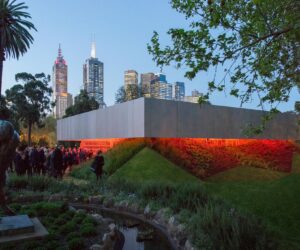Innovation Spaces: The New Design of Work
We all want to work somewhere nice, somewhere that has natural light rather than a million fluorescent bulbs burning our eyes.
Unfortunately we can’t always get what we want, however a new trend paper from the Brookings Institution’s Anne T. and Robert M. Bass Initiative on Innovation and Placemaking, called “Innovation spaces: The new design of work”, has found that what we want may just be what we need to do our jobs well – but not at the expense of function.
Design has always played a part in how people work and interact. Whether you’re aware of it or not, well-designed spaces have the ability to facilitate and influence ideas, whereas poorly designed or closed off spaces often shut them down. In recent years, from small towns to cities, this idea of design and work integration has been slowly transforming the landscape.
For the past 10 years “innovation spaces” – research institutes, incubators, accelerators, innovation centres, co-working spaces, start-up spaces and more – and their designs have grown considerably across the world.
Authors of “Innovation Spaces: The New Design of Work”, Julie Wagner and Dan Watch, draw from nearly 50 in-depth interviews with global-reaching and local-serving architects and innovation space managers to analyse the success and the future of innovation-oriented workspaces.
According to the paper, “the ambition to remain cutting edge has driven leaders of industry, and their architects, down the path of creative experimentation in design. In doing so, the last decade of design has embodied a shift away from ‘style’ and more toward embracing core values aimed to help people flourish under new economic and demographic conditions.”
Increasingly, architects and designers are tasked to redesign spaces to do more than simply house innovation-oriented activities. Their goals are also to create communities, facilitate collaboration and create serendipitous encounters. Through design, architects and business leaders are essentially being asked to re-wire the social, if not organisational culture, as much as to adhere to strict building codes.”
The paper also states that although it may appear – largely based on the media, the movies, and if not from green itself – that open-plan, informal workplaces are now conventional practice, a more accurate picture is that most people still work in traditional offices that emphasise individual work.
It’s important to understand that aesthetically, though the idea of an entirely open-plan workspace may be appealing, it won’t work for everyone. According the paper “just about everyone has a surprisingly strong opinion on the layout of workspace—be it an open office design, a closed one or something in between.”
Striking the right balance based on the value that an organisation places on collaboration and how that collaboration can be achieved seems to be the sweet spot that everyone is aiming for. There can be no set layout that all workplaces subscribe to, and the reality is that what works at first may need to change as the workplace evolves – flexibility cannot be ignored.
One of the clearest findings from the paper is that to be truly successful, “innovation spaces” must provide easily accessed areas for people from seperate disciplines and professions to converge. In the wake of increasing technological advances and blurred boundaries between jobs, cross-sector collaboration is key.
The paper concludes that as the global economy continues to place emphasis and value on “innovation as a means to grow new sectors and new jobs, the role and value of innovation spaces will equally rise.”
Not only do they give people the freedom and focus to experiment, innovation spaces, in their own right, have become a locus of experimentation in design. Having the ability to react and respond, to test and try, to make mistakes and move on, make them first-line experimenters that advance both a practice and pedagogue.”
Ultimately employers, city leaders, architects and designers need to recognise the importance of functionality over aesthetic, and as a result truly unique spaces will emerge that not only look “cool” but also contribute to, and strengthen, communities and economies.














